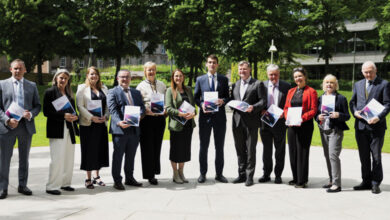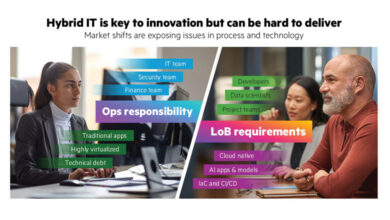Towards a data-driven housing future

Martin Tully, Head of Data and Analytics at the Department of Housing, Local Government and Heritage, discusses the Department’s data strategy aimed at improving data quality and accessibility.
With the State’s housing crisis continuing to persist through a third government term, data is playing an increasingly pivotal role in shaping government policy. In this context, Tully says: “Evidence-based decision-making is essential for improving housing delivery.”
Tully highlights the evolution of the Department’s approach to data: “We have moved from reactive reporting to building structures that support consistency, stewardship, and collaboration.”
Tully characterises the Department’s strategy as a deliberate move away from fragmented practices toward a unified framework. “Our story is not just about datasets; it is about how we document, define, and manage data across its entire lifecycle,” he explains.
Referencing early challenges, Tully recounts how routine data requests would prompt repeated cycles of clarification and validation. “You would be asked a question like: ‘What is the number of housing starts?’ But without a source, a definition, or a date range, we would be trying to answer without the tools,” he says. “Each request was met with goodwill and effort, but it exposed a lack of consistency and structure.”
Governance
In response, the Department launched a comprehensive five-goal data strategy, which includes:
- establishing governance, classification, and standards;
- embedding data management practices;
- building an integrated data platform;
- growing live analytics and reporting; and
- developing people, skills, and data culture.
One of the most significant developments is the creation of a metadata registry, which is a centralised reference for terminology, definitions, and value domains.
“We have used the ISO 11179 standard to define terms like ‘property type’ clearly and consistently,” Tully says. “This work may seem technical, but it is the foundation for trust in the numbers we publish.”
An ‘insights-driven’ housing strategy
Alongside metadata work, the Department has launched the Insights Platform in collaboration with the Department of the Taoiseach. “It is built from scratch, pulling together over 60 data sources and more than 400 metrics,” Tully explains.
The platform aligns with the four key pathways of Housing for All:
- affordability and home ownership;
- social housing and homelessness;
- supply and construction; and
- vacancy and efficient use of stock.
“This system allows us to visualise housing progress in near real-time,” Tully notes. “Behind every dashboard is a metric registry showing ownership, purpose, and caveats so that data can be interpreted accurately and not just consumed.”
Emergency response
Tully also highlights a recent case study where structured data work enabled rapid crisis response. Following Storm Éowyn, his team was tasked with mapping emergency community hubs.
“Multiple local authorities provided data in different formats. It required geospatial validation, coordination with LGMA, and vetting by the Department of the Taoiseach,” he explains. “Thanks to our GIS professionals, we were able to publish a national map which is live and accurate within days.”
Tully says the project shows “how far we have come” and “how crucial well-managed data is in a crisis”.
Digital strategy
The Department’s broader digital strategy, currently in consultation, will, Tully states, reinforce this work under four pillars:
- citizen digital experience;
- innovate to create;
- smart and resilient communities; and
- data.
He also underscores the importance of data literacy, calling it “foundational” for the use of AI or advanced analytics in public services. “If we get the basics such as stewardship, governance, and literacy right, then we will be well-positioned to innovate,” he adds.
Collaboration over silos
Tully says that underpinning all technical change is a change in culture: “We have to get away from the idea that data teams are just back-office support. That model of ‘throw it over the fence’ no longer works,” he says.
Tully calls for “cooperation at scale” across departments and agencies. “We are at our best when we bring together different skills such data analysts, policymakers, and technologists toward a common goal.”
Tully is optimistic about the road ahead but pragmatic about the work still to be done. He concludes: “We have made huge progress, but we are still building. The systems, registries, and platforms we have created are steps toward something bigger: a housing system supported by clear, connected, and actionable data.”





